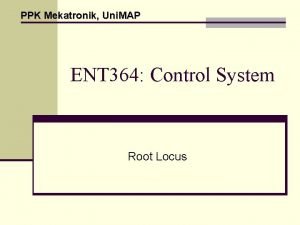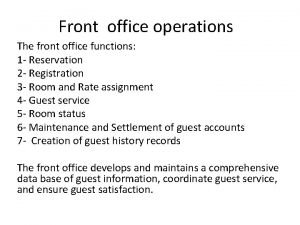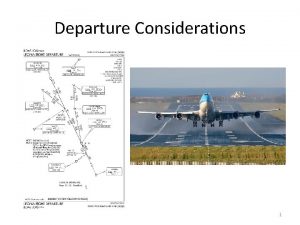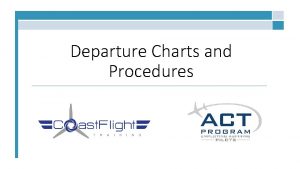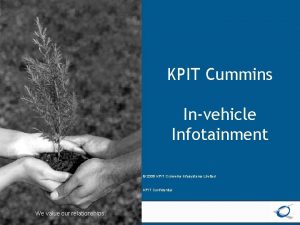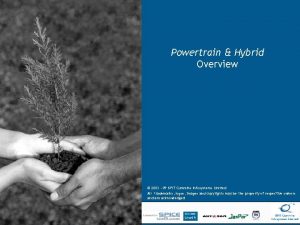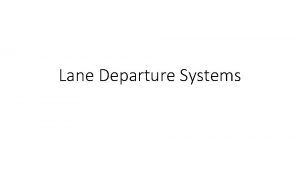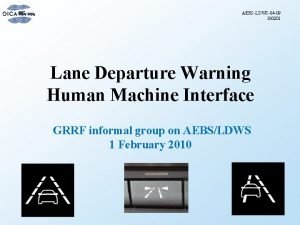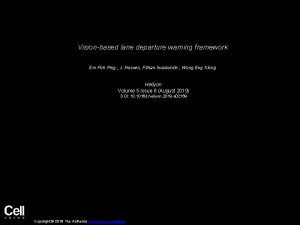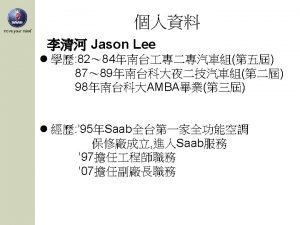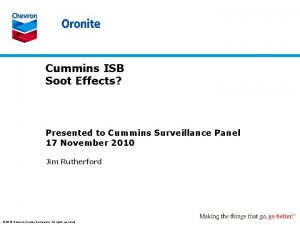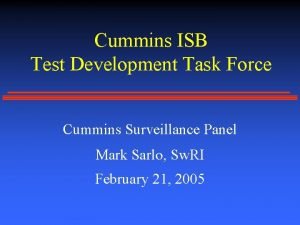KPIT Cummins Infosystems Ltd Lane Departure Warning System











- Slides: 11

KPIT Cummins Infosystems Ltd. Lane Departure Warning System (LDWS) Ref: 20100720 -V 1. 0 © 2003 -10 KPIT Cummins Infosystems Limited

LDWS - Objective Basic Idea: q If the car is departing from lane without the driver turning on an indicator “Lane Departure Warning System” should alert the driver Task: q The task includes detecting the lanes and making a decision of whether the car is going to unintentionally cross the lane 2

LDWS - Overview q q q An on-board camera is used to capture video of the road The camera is placed close to the rear view mirror and onward looking Various image processing algorithms are applied on images identify and extract lanes This data is used to check whether the vehicle is tending move out of lane The driver is warned by an audio alarm when he is about deviate from a lane Basic system flow diagram 3 is to to to

System Configuration for LDWS System is designed according to the following guidelines specified by ISO standard ISO 17361: 2007(E) and FMCSA q The distance that camera should look ahead is 40 meters q The road lane boundaries vary across the different countries – Inner and outer lane boundaries can be customized q The width of the road is different in different countries – warning threshold can be customized. q The distance between dots in the lanes is also different in different countries 4

Status of Current LDWS System (Current & Future) Sr. No. Feature description Status 1. Straight Road with Continuous Lane Markings Completed (ideal condition) 2. Straight Road with Dotted Lane Markings Algorithm can identify lanes in normal weather conditions 3. Shadows, Glare, Patches on road, Low Visibility, Noise, Different Contrast Levels, Pedestrian Crossings and Other Markings Works well in normal cases if lanes are visible (work in progress for extreme cases like bad road markings, high noisy images etc. ) 4. Occlusion by Other Vehicles, Pedestrians, Animals Can predict a missing lane up to 20 frames 5. Curved Lane Detection In Progress 6. Embedding LDWS on DSP chip To be started 7. Botts’ dots, Extreme weather conditions (Ex. Heavy rain, snow fall, fog etc. ) Design level changes in algorithm would require. Activity is not started. 5

Different Scenarios Covered by LDWS Dotted lanes Missing (left) lane Occlusion from oncoming vehicle Pedestrian Crossing Shadows on road Glare on Road Noisy Image 6

Performance and algorithm latency Testing of LDWS on desktop PC with following configuration (for stored videos) Ø Intel P 4 CPU 3. 00 GHz Ø 2. 99 GHz, 1 GB of RAM Ø Microsoft Windows XP Professional Version 2002 No of input videos and live testing Ø 25 + videos with all different scenarios (live testing on highways, city roads, multiple lane markings, yellow lane markings, missing lanes etc. ) FPS Ø 22 frames per second (For field testing) 7

Accuracy and Duration Success rate: (Assuming 22 fps) Sr. No. Description Percentage Value 1 Correct lane tracking (No. of properly detected lanes/Total no. of lanes) 89. 94 2 Correct departure warnings (No. of correct departure warnings/Total no. of actual departures) 94. 44 3 False lane tracking/detection (No. of false detected lanes/total no. of lanes in total no. of frames) 0. 16 false detection/tracking per sec. 4. False alarms (No. of false alarms/total no. of frames) 0. 009 false alarms per frame Ballpark Effort & Duration for development: 4 Engineers about 8 – 10 months 8

Present Challenges Bad Lane Markings Rain Snowfall Fog 9

Actual Results of Road Test 10

Thank You




